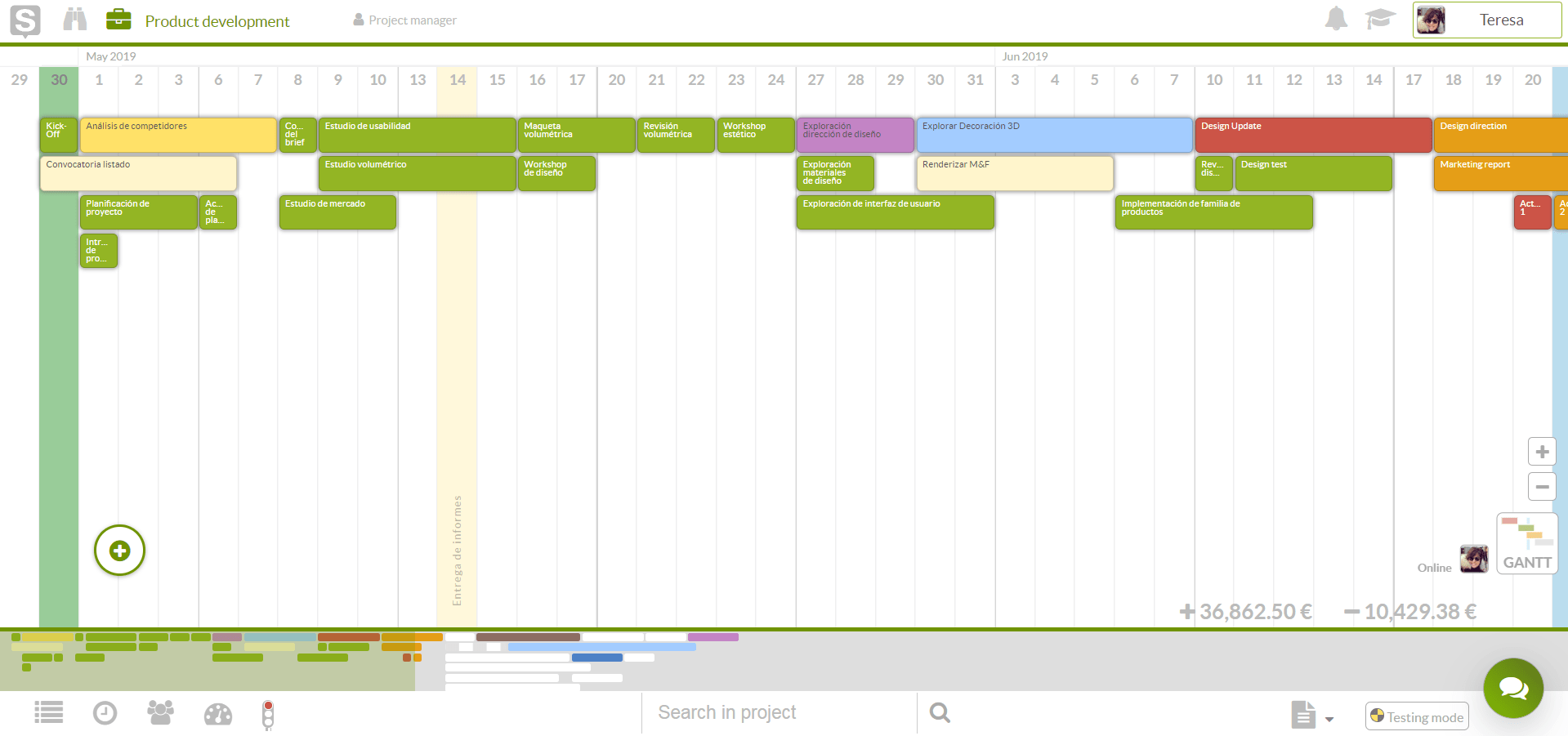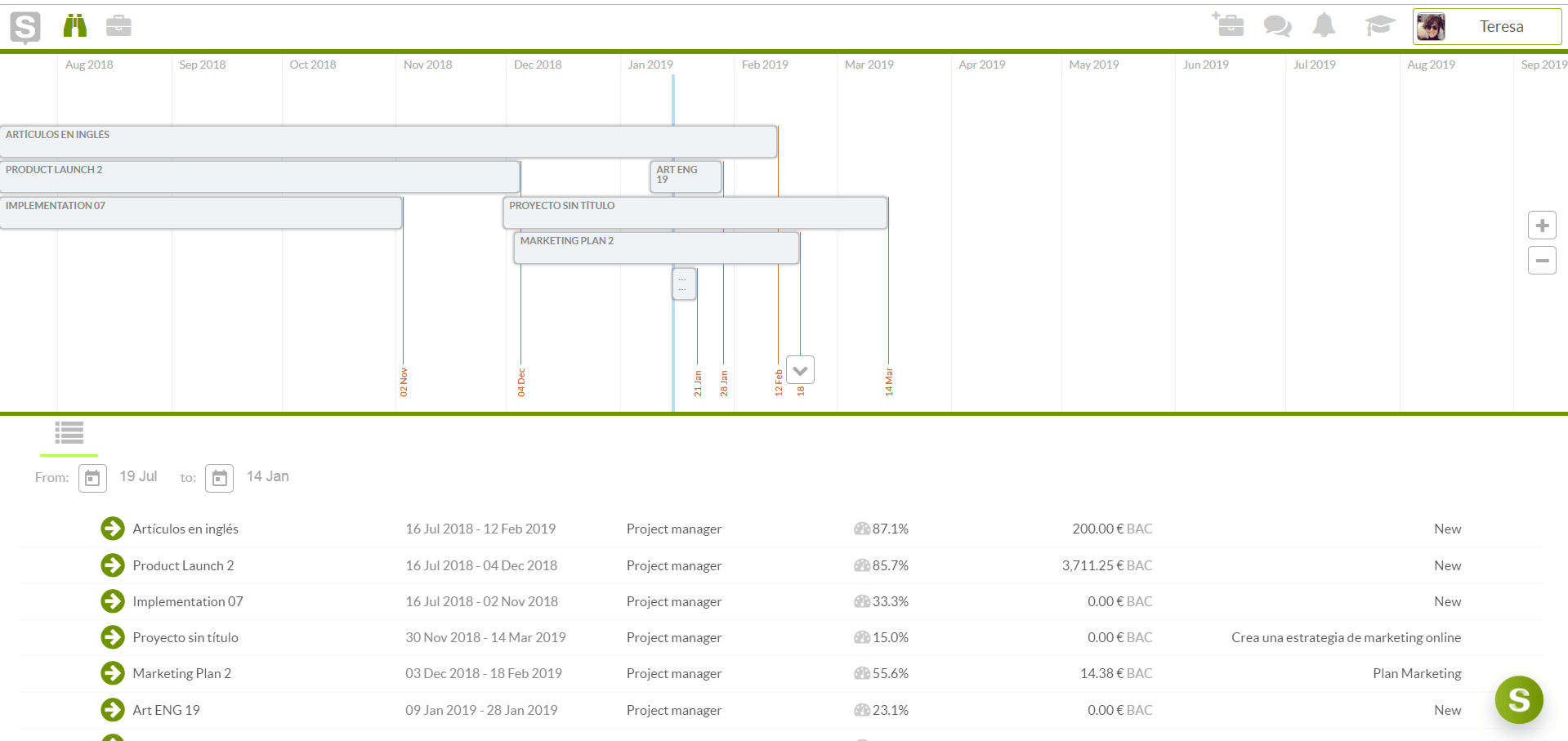Businesses dedicate a large part of their time identifying strategic objectives that direct them to their main goal. In most cases, many managerial teams get so lost in a sea of KPIs that the only thing they cause is wasted time and complicated structures to manage and explain to the team. For that, some of the most competitive companies use the OKR. We will talk about Objectives and Key Results.
The U.S. retail multinational Sears Holdings explained that hourly sales increased by 8.5% since they started applying OKRs, going from an increase in hourly sales from $ 14.44 to $ 15.67.

Índice
What are the Objectives and Key Results (OKR)?
How do you define the OKR in one line? So, it’s simple. It is about aligning the team’s efforts and directing them towards a common goal. Therefore, they are designed for and by work teams. Its concept is also based on the orderly and collaborative growth of all the elements of the company, sharing equally responsibility focused on common objectives.
A very basic example: the marketing department seeks to increase lead generation, however, in human resources they are looking for engineers, because the development department focuses more on improving software speed. Or for example, vice versa: engineers expand new product functionalities, but in Communication and Marketing focus their efforts to continue transmitting mature aspects that according to their KPIs, do convert. Are they all chasing the same? No.
It is a concept that is not as widely known despite its 70 years of existence. And those who know of it associate it with companies such as LinkedIn, Intel, Zynga or the famous Google OKR.
The Sinnaps online management tool identifies what the OKRs will bring to the business and the questions that will help you apply this type of objective management in your company, while also analyzing how Google does it.
Google OKR
It is not a question of whether only fast-growing start-ups apply OKRs. It is about those companies that pursue objectives in an aligned manner and in conjunction with the entire team.
Mainly, the collaboration of each person in the company plays a prominent role in this way of identifying and managing the objectives. Therefore, companies like LinkedIn, Twitter, Intel or Google have been applying it for decades. Why have they lasted so long? What is the key to their success? How and why has Google been using OKRs since it was a start-up?
It all started with the management of objectives of Peter Drucker in 1954. Then, Intel founder Andrew Grove approached the concept of Objectives and Key Results in his publication ‘High Output Management’ in 1968. In it, he distinguished two issues: Where do I want to go? (Objectives) and How will I measure my evolution and walk to that destination? (Results).
In this way and since joining Intel in 1974, John Doerr made contact with the OKRs. Later, it would transfer to the founders of Google, Larry Page and Sergey Brin, when the then start-up barely had barely 40 people. Most surprising of all, the concept still works with the 60,000 employees of the now technological tycoon.
He was one of John Doerr’s main legacies: Google’s OKR. Author of Measure What Matters, Doerr used to say: “Ideas are easy, execution is everything else”.
Thus, the OKR methodology was gradually spreading among all types of companies. From the immersed ecosystem of start-ups, the extended world of micro-companies, to large companies to medium-sized ones. Google employees were the main ambassadors of the OKRs, being one of their main corporate know-how’s. Wherever they went, they were implanted there.
The 3 Benefits of the Objetives and Key Results (OKR)
Before launching to change the management of the objectives of the company, we will be clear about the benefits that this competitive and unique concept will bring us. The first thing that companies that work with OKRs gain is the alignment between strategy and results, followed by commitment and motivation from everyone.
Thus, the OKR methodology is created for both the board and the team members. Well, the results of the second bring about the interests of both. And it is that, a correct application of the OKRs will entail enjoying these three main benefits:
- Efforts and results focused on the priority objective to achieve the general objective of the company.
- United team, because everyone is focused on achieving it with the same burden of responsibility. The strategy is aligned in a horizontal way.
- As a result of this transparency and involvement, this conveys motivation and commitment to the team.
The 3 Questions of the Objetives and Key Results (OKR)
In the long run, the company has an ultimate goal, based on growing the company. However, how do you know how to apply OKRs from Google or other large companies? We identified three issues that will help us in this process.
Where to go? – Objectives
Every project or organization must be clear where it is headed. As obvious as it may be, many companies come across this important lot: identifying the ultimate goal of their project. And it’s no easy task. Of course, increasing profits and growing the business is a common goal of the entire organization, however, where do we find this success? Where should we go to find this purpose?
So, this is the first point we should develop when we apply the OKRs in our company. Through this management of specific objectives, what we will be doing is also giving transparency to the common purpose. As its own words indicate: common, collaborative, transparent. The OKRs are designed for the team, the engine that must be aligned with the management objectives. However, as mentioned above, the results of some influence everyone’s purpose, including the management team.
How to go? – Key Results
We enter the world of strategy, where collaboration and teamwork are one of the maxims of OKRs. So, we must demolish the common goal and define small goals with which we will achieve the main objective. It’s when KPIs come into play and we see the difference between OKR vs KPI. Thus, we will measure the success of each small goal, always synchronized with the main common goal.
In this sense, OKRs share joint responsibility equally. There are no individualisms, all have the same part of commitment to and for the good of each objective, providing results that involve an improvement of the final purpose of the company.
To do this, we can use our planning with activities labeled by objectives. The entire team will closely follow the evolution of those activities needed to complete each step towards the main goal.

What to do?
In addition, thanks to good goal management, the team also knows what to do to meet the first two questions: common objective and responsibility strategy of each. So, we add ‘What to do?’ which implies initiative and motivation.
Each project collaborator and stakeholder knows very well their limits, responsibilities and tasks that will help the whole team achieve those small goals. The whole effort is aimed at achieving those common goals. Prioritized and planned in a common calendar, we set milestones or key moments where reviewing is the goal status. So, it is not a question of seeing who has done what, but of assessing what has been achieved in common and what is lacking to achieve that small goal.
The Key to Applying OKR Methodology in Remote Working Environments
Although it is a concept whose main purpose is the union of the team to achieve the common goal, each person knows what role he/she plays in fulfilling that part of common responsibility.
Thus, what can be simple in a common work environment can become more complex if we move it to a virtual office, where remote work is inevitable.
Even when the company experiences the growth pursued, the teams move to other geographical locations. How do we maintain that union and alignment of all teams? How do we work with agile OKR?
The key is in which online tool to use and how to use it, as long as we do not lose sight of that global vision of the common objective. And for that, we will strengthen the powerful communication.
Fortunately, today there are many of these applications on the market. All of them are accessible and easy to use, but very few really adapt to the needs and flexibility of equipment needs. Among the most used, complete and at the same time easy to use is Sinnaps.
Do not lose the global vision, accessible to the whole team:

This platform will help us with the organization and distribution of work among all people. We can plan activities by objectives and measure the evolution of each task based on KPIs. Its dashboard does not indicate whether we will finish the work according to time and estimated resources and will help us prioritize the tasks to achieve these objectives.
In addition, it allows you to show each team member, a global vision of the objectives that the company pursues until reaching the primary, going through the strategy to achieve it together. Because in the end it’s about that: a common understanding, knowing what is being done, but above all, what we’re doing it for.

